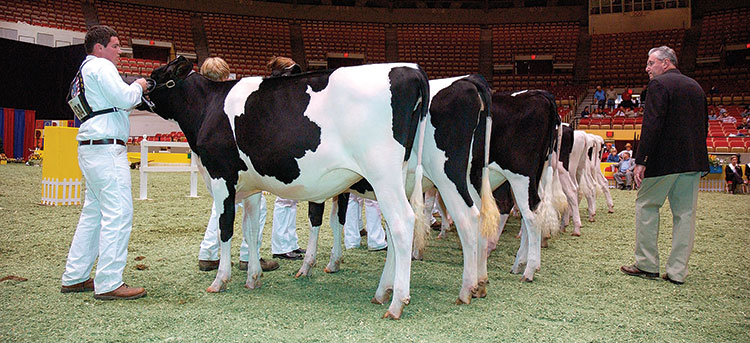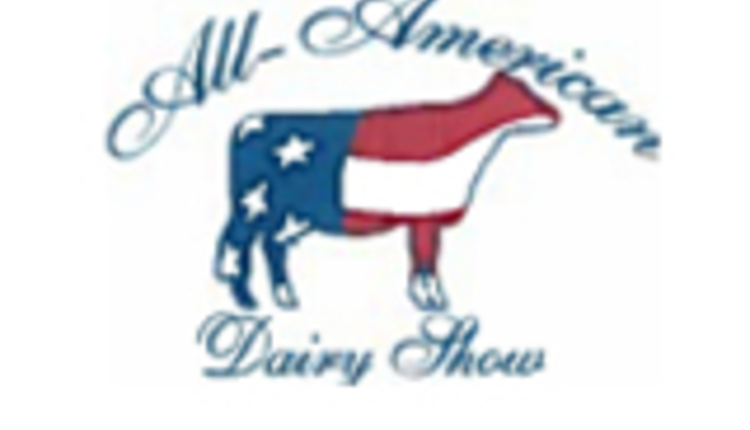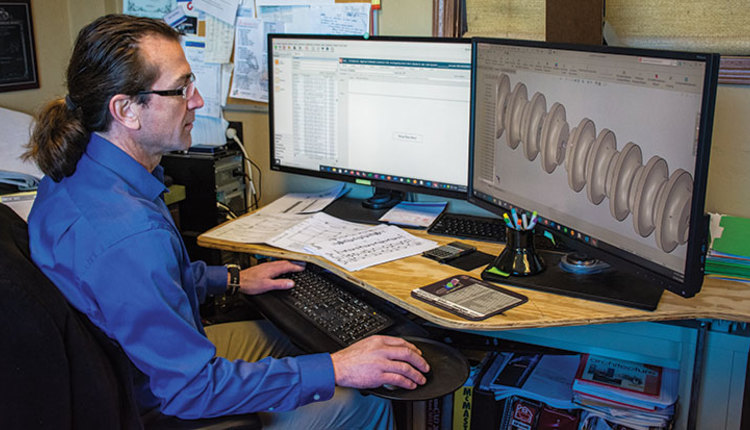
Before you show
When choosing an animal to use in showmanship, make sure she is in good condition and an appropriate size for you to show comfortably. After selecting your cow or heifer, work with her often so she is halter broken and is comfortable being handled for long periods of time. Your animal should remain calm when distracted and be accustomed to others approaching and touching her. At home and at the show, wash the animal well until her hide has a glossy sheen. If you’re showing an animal with white markings, make sure these areas are well cleaned.
Clip your animal for the first time, and trim her feet six weeks prior to the show. Clip your cow or heifer again one to two days before showing. On show day, clean her ears, ear tags, and feet. Before going into the ring, wipe any hay or other feed particles from her muzzle.
The halter matters
By far, one of the most important pieces of equipment in showmanship is a halter that fits your animal well. Good halters enhance the look of your cow or heifer’s head, while a poor-fitting halter detracts from her. In showmanship, your left hand needs to be under the chain, but your fingers should not be through the halter’s ring. With a short lead strap, make three loops, not in a figure eight. Avoiding a figure eight keeps the top loop out of the animal’s eye and allows you to easily reach back and set your cow or heifer’s tailhead.
In the ring
When you enter the ring, walk forward briskly using your left hand to lead. You should lead with your left hand, unless you’re prevented from doing so by an injury or accident. This is done, so that all participants can get in the ring quickly and the judge can begin placing animals. Leave adequate space, approximately five feet, between you and the exhibitor in front of you.
Don’t hug the edge of the ring either; keep another five feet between you and the ring’s edge. This provides adequate space for the judge to maneuver easily and view your animal from both sides.
If holding the throat gives your cow or heifer a more dairy appearance, then it should be held at the turn of the jaw as you enter the ring. Throat should only be held if the animal is well controlled and after all other faults have been corrected. In showmanship, when the last calf enters the ring, you should turn around and start showing.
When the judge asks you to stop, set up your calf — with faults minimized — as quickly as possible. For a heifer, the leg closest to the judge should be back. With a cow, the opposite is true; the leg closest to the judge should be forward. After positioning her, hold throat, if needed, except when the judge is observing the animal on the left side. Your calf’s hind feet should be four to eight inches apart, and you should never physically touch your animal’s rear feet. If your animal steps out of balance, place your right hand on her point of shoulder to steady her. If needed, reposition her feet.
As the judge moves around your cow or heifer, move her ahead one short step which gives the appearance of a long-bodied animal. The animal’s head should be tipped slightly toward the judge as he approaches to touch her hide. When the official walks around your animal, provide the judge with a front-end view. Sometimes, a calf will sag in its front end, behind the shoulders. To correct this, gently use your hard-soled shoes to touch the calf’s front foot. This will cause the calf to raise her foot and replace it under her body, tightening up the front end. When the judge moves to the other side or center of the ring, smoothly move ahead another short step.
Moving into line
If the judge asks you to move ahead when circling in the ring, move quickly to the inside by your designated spot, walking the same way as when you entered the ring. When you reach the lineup, turn and lead your calf into place. Then set your animal up to minimize her faults. Keep your animal alert while maintaining a uniform lineup.
In showmanship, the first animal in line should have its left hind leg back. The last one should have its right hind leg back. Heifers in the middle should have their feet solidly positioned under them to show the fewest number of faults. Do not move excessively in and out of line.
As the judge moves along the front of the line, stand to the side of your animal, providing him with an unobstructed view of her front end. The animal’s head should follow the judge slightly.
When asked to circle from the lineup, walk forward with the lead strap in your left hand until the judge turns his attention back to the moving animals. At this point, you should turn and walk backward. In close competitions, you may need to know how to move your calf up and down the line, lead counterclockwise, or switch animals.
Regardless of how well you’re doing, certain actions will detract from you and your animal during showmanship:
- Walking backward when entering the ring
- Sidestepping, showing with a stiff arm or keeping your elbow up
- Unprofessional clothing
- Crouching
- Holding the calf’s head too high
- Carrying a cellphone in the ring
Hard work before the contest and knowledge of showmanship fundamentals, though, can help you place at the top of your class.
In March 10: Scorecard updates for the 2012 show season
In March 25: Aligning evaluation and education
“Leading to Win,” contains tips, the attributes of a top showmanship competitor, and how to navigate situations that occur in close contests. It can be purchased from the Hoard’s Dairyman Bookstore, or phone (920) 563-5551, for $5 in the U.S. To see the techniques in action and find additional information on how to prepare your calf at home, the “Leading to Win” DVD can be purchased for $15.











